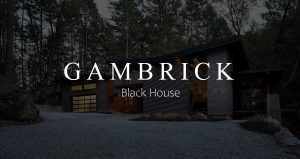Pro Tips You Need To Know Before Painting Your Walls White
White is by far the most popular wall and trim paint color. It brightens up any space with a clean and fresh look that almost universally appealing. White is one of the only colors that’s truly considered safe. It doesn’t turn buyers off because it’s kind of a blank slate but it can also be a beautiful choice. But there’s a lot more to painting your walls white than you may think. White comes in dozens of shades that can be warm, neutral or cool. My favorite trick is to use multiple shades of white in the same room. It provides a subtle contrast that makes things pop without sacrificing the clean look I want.
Choosing white paint for your walls and trim may seem like a safe and easy choice but it’s not. With so many variations to choose from in many ways it’s harder than choosing a color. And then there’s the sheen to think about.
Over the years we’ve used white paint in just about every home we’ve ever built, designed or remodeled. Experience has taught us a lot and we’re going to share all we’ve learned with you. Ahead we’ll take an in depth look at al the Pro tips you need to know before painting your walls white.
Most White Paint Isn’t Pure White
Many people believe don’t realize how many options there are when choosing a white paint. They also don’t realize how many colors white actually comes in. Not in solid bold colors but in subtle tints. Blue, red, yellow, brown and even green undertones can all be added to a white base. It’s actually a very versatile color that can work in just about any design.
To test this out, start with a swatch of pure white and hold other whites against it. You’ll realize just how colorful they actually are. Of course it’s a very faint coloring but it makes a big difference on the walls. Different shades of white can totally change the vibe of a room. Cool whites and warm whites create an entirely different feel.
Most white paints fall into three categories:
- Warm. Soft on the eyes and generally not too bright. These look fantastic with lots of natural light.
- Cool. Most blues, grays and green undertones come on the cool side. They look best when paired with cool decor or in a Modern home.
- Gallery. These are the purest white paints. We actually don’t use them much on the walls. Pure whites are more common for ceilings and trim work.
All Paints Start As White
All paint starts out as a white base. Then colors are added to create hundreds of different shades. And if you want to mix your own paints, then technically there’s a near unlimited number of colors you can potentially create starting with white. I recommend adding color a drop at a time. I still want white wall paint but with just a very subtle hint of color.
Start mixing with the purest white possible. If the base white isn’t pure that means it already has some color in it. That can be a problem because you’ll have to counteract or work with the color that’s already in your base. For example, if I want a cool white then don’t start with a warm base. To cool it down you’ll have to counter whatever color made the white warm. It could be red, yellow, orange, brown, etc. There are lots of colors that could have been added to the base. It’s hard to know for sure once it’s been mixed.
Starting with a pure white makes it easier to reproduce paint colors too. If I experiment and find the perfect white paint for my walls I want to make sure it’s reproducible every time I want to use it. The only way to do that is starting with a pure white base and then adding pure color tints.
White Paint Changes With It’s Surroundings
White is a tricky color to design with because it changes depending on it’s surroundings. Bounced light effects white quite a bit. The color furniture you use, drapes, flooring, etc. all effect the way the paint will look. Even where you live makes a big difference. Designing in Florida where it’s beautiful and sunny almost every day is very different than in Seattle where it rains almost every day. When painting your walls white it’s super important to choose a shade that looks good in the actual environment it’s going in.
I can’t tell you how many times I’ve picked out what I thought was the perfect white paint only to find out it was all wrong on the walls. White is effected more by it’s surroundings than any other color because of how neutral it is. So take special care when choosing your shade. Whenever I design a home with white wall paint I always consider the lights, overall design of the house, furniture plan, flooring, trim, etc.
White paint can even look different depending on the wall it’s on. Only one side of my house every gets any sun because of how it’s positioned and some trees that block the light. The white walls in the sunny rooms look a lot different than other parts of the house that don;t get sun because of all the natural light. The other stuff like furniture, flooring, trim, drapes, etc. are all pretty much the same but the sunlight makes a huge difference. I tend to leave those windows open more too so that also changes things a bit.
White Paint Is A Cheap Home Makeover
Painting your walls white is a great way to makeover a home without spending a lot of money. This is an especially great tip if your selling a house. Nothing is safer than all white. It’s a blank slate that doesn’t turn many potential buyers off. But if you take the time to choose the perfect shades of white, it can really help make a sale.
Good quality white paint averages around $30 per gallon. Add another $7-$15 per gallon for primer and maybe $50 for additional supplies. Don’t underestimate how much a DIY paint job can do for a room. On average you’ll need about a gallon of primer and 2 gallons of white paint for an average 300 sq.ft. room. I’d get another gallon for the trim and some spackle to fix small imperfections. There’s no better way to transform a room for under $200 bucks.
One of the keys I’ve learned over the years is how important priming is. Especially when your going over dark under colors. A good primer coat will save you money by keeping the paint job to two coats. Without primer, you could easily need 3 or more coats of paint.
Perception Matters
An interesting fact about white paint is how our perception effects it. Some people see colors a little differently than others. I’m not talking about color blindness. Rather, it’s a slight yellowing. This effect is more common as people get older but it can happen with anyone and it’s more pronounced with white.
When you look at a wall that’s brown, gray, blue, green etc. Pretty much any other color than white. You’ll hardly notice if the colors looks a little more yellow than it should be. But you’ll definitely notice it when the color is white.
White paint is such a light neutral, with so little color, that any additional color effects it to a high degree. Even if that color is being added by our own eyes it makes not difference. The look is the same as if you added a yellow tint to the actual paint. For this reason many designers recommend doing one of two things.
- Go Warm. Choose a white that won’t be effected by a little more yellow, like warm creams. This way a yellow tint will accentuate the color instead of making it appear dirty.
- Go Cool. If you choose a shade of white paint that’s on the cool side, a little yellow will just warm it up. Make sure if you go this route that you don’t create a clash. A cool white with blue undertones can look a little green when you add yellow.
Whichever option you decide to go with it’s at least an important thing to consider. Especially if your choosing a white paint for someone else’s walls.
White Is Soothing
There’s a reason why white is the most popular bedroom wall color. It’s because white’s soothing. White bedrooms are considered tranquil, zen like, feng shui and without distraction. Painting your bedroom white can help you relax and wind down for bed. However be careful what shade of white you choose.
I like soft shades of warm white that’s easy on the eyes and looks good with artificial light. At night I’ll watch a little TV or read before bed with the light on. Of course there’s no natural lighting at night so how your paint looks with TV and other artificial lights is all that matters. Stark bright whites aren’t that soothing. I don’t want my bedroom looking like a doctors office. Creams are a great choice.
Vary The Color
Who ever said everything had to be the exact same shade when painting your walls white. With so many varieties of white to choose from why go with just one. Most walls have at least a base trim. Many also have crown, window, door, masonry, paneling, etc. There are a lot of elements that could potentially be painted white on a wall. Varying the shade adds a lot of interest and contrast. It makes things stand out and flow with one another without looking flat.
An all white wall with varying shades is a monochromatic color scheme. Not a flat bland one. And to me, monochromatic colors bring a lot of energy to a room. One of my favorite design tricks it using multiple shades of white on a wall as follows.
- Walls. I like to keep the walls the darkest shade of white and generally on the warm side. This color scheme looks great with creams.
- Trim. For my base, crown, window and door trim I like a pure white with almost no color. Sometimes I’ll tint it a little depending on the wall color I choose just to soften the trim up a bit but I generally like it very pure. I want a crisp trim color.
- Paneling. Wall paneling like wainscoting or board and batten is a little different. You can either match the trim or do something different. If I go different then I like a shade in between the walls and trim. But if I match the trim then I choose a color that’s soft and a closer match to the walls. I don’t want to overdo it with pure bright white trims.
- Masonry. White brick is very popular right now. I like mine on the pure side and lighter than the walls but darker than my trim.
By varying the shades you can create nice contrast and avoid that bland all white wall nobody wants.
Vary The Finish
A great way to dress up an all white room is by varying the finishes a little. I don’t recommend going from flat to high gloss, but there are lots of variations in the middle you can play with. Try flat on the walls, semi gloss for the trim and an egg shell for wall paneling or painted brick work.
When you vary the finish it provides just enough contrast between elements. You don’t want surfaces to blend in because the design will look flat. Especially from a distance. Sheen is a great way to make things pop against one another. Even when the color is the same.
Another benefit to using different finishes on the same white wall paint is that it subtly changes the color. The finish coat reflects light which creates shine. That shine actually changes the color you see a little bit. Try it out yourself. Use the same white paint on the walls and trim but use a different finish. You’ll notice a very small difference in color. It’s a trick of the eye but it works and helps create separation.
Painting Your Walls White Helps Resale
One of the best ways to help sell a house is to paint it white. As a builder, we always paint all of our spec homes whites. White walls with a different white trim. I vary the shades and finishes just as I talked about above.The great thing about painting your walls white is that you create a clean blank canvas for the buyer. Some will love it, others will like it and almost no one will hate it. And if they do, white is the easiest color to paint over. It turns almost no one off.
Another big factor is the pictures posted online. In almost every case, white walls look best. In person gray, blue, brown, etc. may look great, but in online pictures white sells homes the fastest. And most sales are made these days over the internet. Sure, almost everyone still comes and sees the home in person. But by that point they want the house. Your big concern is not costing yourself a sale with colors they may not like. It’s much easier for people to picture painting over white walls then a color.
In almost every case you should paint the walls, moldings, ceilings, and doors white. I recommend varying shades and finishes. A uniform blank slate will make the space look bigger and the ceilings higher.
If your kitchen looks dated then paint the cabinets too and replace the knobs. Clean white kitchen cabinets with a dark knob sells homes. I like to keep my paints on the warm side for everything, including the cabinets.
Be Prepared For Some Maintenance
White walls are considered an unforgiving color. Every little dent, smudge or hand print shows on white. Even scratches will stand out like a sore thumb. Painting your walls white is a beautiful look when brand new, but they take some care.
You can prevent some of this by adding a top coat or some gloss to the paint. Clear coats add an additional layer of protection and resistance to scratches and stains. They do anything to prevent damage like dents but small stuff won;t be as big an issue. They also make white easier to clean off because most finishes are water resistant. The worst thing for stains is a flat white paint. Without any protective layer the mark sets right in and becomes hard to clean. In fact, using cleaners on a flat white wall can actually damage the paint in some cases.
Accents
One of the cool benefits to painting your walls white is that other colors really pop against it. A colorful painting or plant looks that much better against a white background. This is true for any color you use in the room. Because there’s nothing for the colors to clash with. Against a white wall, colors really pop
White walls also provide a nice opportunity to add a feature wall. Wood or painted built ins, stone, brick, or another color all look much better when set against white walls. Just as with the accents, any color looks better when along side white.
This is also true of small elements like metal finishes. Many people underestimate the impact of the metal they use in a room. Things like knobs, picture frames, or planters all look great against white. And colors that we wouldn’t ordinarily use, like gold, look really good. Gold has been out of style for a while but the new warm golds paired with warm whites and creams look fantastic all over the house. Especially in the kitchen.
If your someone who likes to style with lots of accent pieces then consider painting your walls white. it creates a wonderful blank canvas for all your other decor.
Use Layers
Whenever you style a room with mainly one color you run the risk of looking boring. This is why I’ve talked so much already about varying your shades and finishes. But another great way to do it is by using layers.
Use a variety of textures and colors in your furnishings, drapes, pillows, fabrics, rugs, woods, and accessories. Create excitement, and avoid appearing boring, by layering your style, colors and materials.
I love the play with different fabrics and textures. Especially with pillows, blankets and my rugs. I’ll lay a thick fur blanket over a smooth sofa with plush pillows. Contrast can be about more than color and sheen but also texture. And these effects are more pronounced when against white walls because there’s less to distract from your design elements.
White Isn’t Boring
Many people have a misconception that painting your walls white is a boring choice. And while this can sometimes be true if you choose the wrong shade and don’t layer variety. Many of the most exciting color schemes I’ve seen recently used nothing but white. It’s a very Modern color that’s used in almost any style home.
I’m always surprised at how white paint can transform just about any room. If your renovating an older home, try painting the walls and trim white before you spend tons of money on other updates. A cheap gallon of white paint can go a long way. But choosing the perfect shade of white is much harder than you’d think. There are tons of choices and each one can look different depending on whether it has a cool or warm undertone. And then you have lighting and other elements to consider too. Being an interior designer isn’t easy.
I’ve been doing this for a while and always seem to use the same base shade called Alabaster White by Sherwin Williams. I tint it a little darker or lighter as needed for the walls, trim, brick, etc.By starting with a base white that I like for the walls and then tinting it for other elements they all feel connected but also different. I want a cohesive monochromatic color scheme of all white but I also want variety. And it helps when I use the same base shade for everything because the manufacturer is the same. I save my paint codes when they mix it which makes it easy to get more whenever I want to.
This method works great for me and probably will for you too.
Summary: Pro Tip You Need To Know Before Painting Your Walls White
White is by far the most popular wall and trim paint color. It brightens up any space with a clean and fresh look that almost universally appealing. White is one of the only colors that’s truly considered safe. It doesn’t turn buyers off because it’s kind of a blank slate but it can also be a beautiful choice. But there’s a lot more to painting your walls white than you may think. White comes in dozens of shades that can be warm, neutral or cool. My favorite trick is to use multiple shades of white in the same room. It provides a subtle contrast that makes things pop without sacrificing the clean look I want.
Choosing white paint for your walls and trim may seem like a safe and easy choice but it’s not. With so many variations to choose from in many ways it’s harder than choosing a color. And then there’s the sheen to think about.
If you have any questions or comments e-mail us any time. We’d love to hear from you.





















